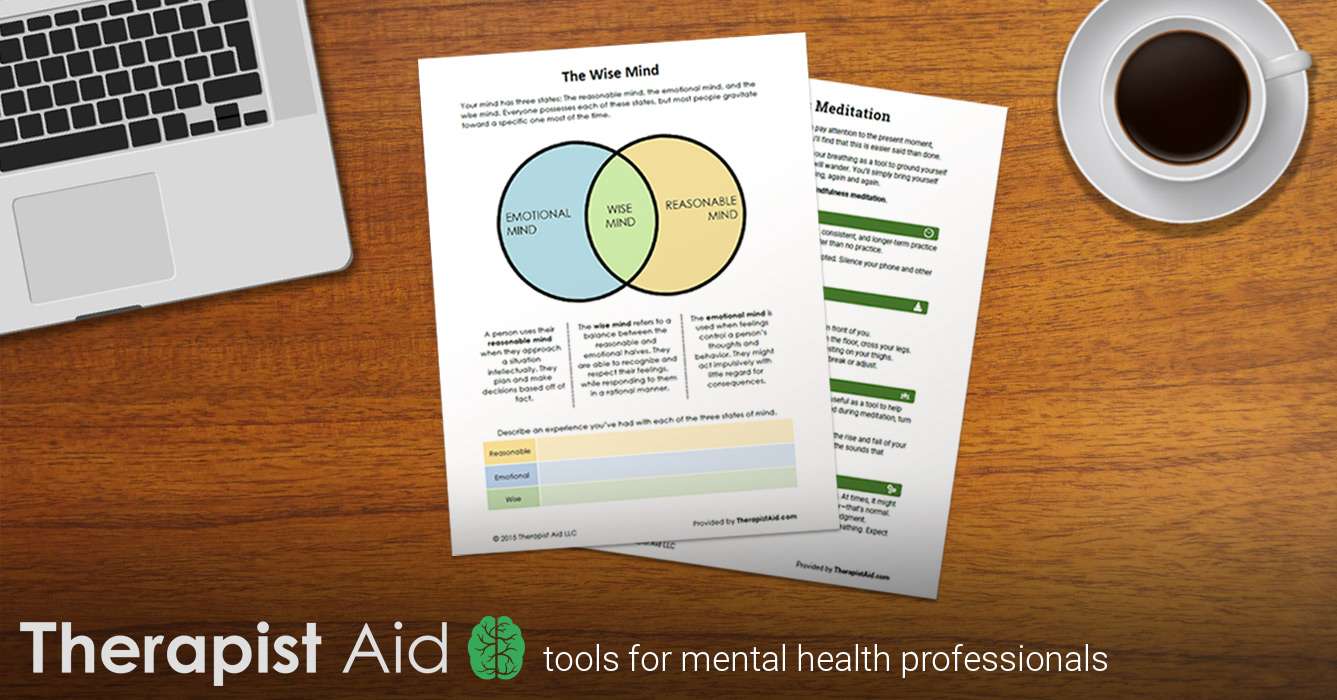100 million Americans have chronic pain. Very few use one of the best tools to treat it.
Share All sharing options for: 100 million Americans have chronic pain. Very few use one of the best tools to treat it.
When pain settled into Blair Golson’s hands, it didn’t let go.
What started off as light throbbing in one wrist 10 years ago quickly engulfed the other. The discomfort then spread, producing a pain much “like slapping your hands against a concrete wall,” he says. He was constantly stretching them, constantly shaking them, while looking for hot or cold surfaces to lay them on for relief.
But worse was the deep sense of catastrophe that accompanied the pain. Working in tech-related startups, he depended on his hands to type. “Every time the pain got bad, I would think some variation of, ‘Oh no, I’m never going to be able to use computers again; I’m not going to be able to hold down a job; I’m not going to be able to earn a living; and I’m going to be in excruciating pain the rest of my life,’” he says.
Like many patients with chronic pain, Golson never got a concrete diagnosis. For a decade, the 38-year-old Californian went from doctor to doctor, trying all the standard treatments: opioids, hand splints, cortisone injections, epidural injections, exercises, even elective surgery.
Golson’s pain was not caused by anything physically wrong with him. But it wasn’t imagined. It was real.
“Pain can be ‘real’ pain — and it can be caused by brain circuits. We have to get over this concept that either the pain is real or it’s all in my head and I’m making it up.”
After weaning himself off the opioid Vicodin and feeling like he had exhausted every medical option, Golson turned to a book that described how pain could be purely psychological in origin. That ultimately took a pain psychologist, a therapist who specializes in pain — not a physician — to treat the true source: his fearful thoughts. Realizing that psychological therapy could help “was one of the most profoundly surprising experiences of my life,” Golson says. No doctor he ever saw “even hinted my pain might be psychogenic,” meaning pain that’s psychological in origin.
Golson was lucky; few chronic pain patients ever get the chance to understand the psychological dimensions of their pain or try psychological therapies.
There are 100 million Americans who suffer from chronic pain, and an unknown number of them are like Golson, with back pain, neck pain, fibromyalgia symptoms, or other forms of pain that have no diagnosed physical cause.
It’s not that their pain is “in their heads.” The truth is much more nuanced: All pain can have both physical and psychological components. But the psychological component is often dismissed or never acknowledged.
Big pharma’s aggressive marketing of pills and the minimal training doctors get in pain medicine mean that for too long, the go-to treatment for many forms of chronic pain has been opioids. Yet opioids have proven to be not only largely ineffective for treating most chronic pain but also highly addictive and risky.
Cognitive behavioral therapy, meanwhile, shows meaningful benefits on chronic pain — both for psychogenic pain, and for pain with a physical cause — according to systematic reviews of the research. There’s also promising research around mindfulness-based stress reduction and therapies inspired by it.
Yet pain psychologists are hard to find and hard to pay for, and most patients don’t even know they exist. “At the moment, [these therapies] tend to be seen as a route of no hope for the hopeless, for people who have gone through everything else,” says Amanda Williams, a psychological researcher who conducted one of the reviews of studies on the effectiveness of psychological therapy for pain.
The question, then, is how we shift our understanding of pain so that psychology is the opposite of a last resort.
Pain can be manufactured in your head and in your body
We’re taught, by evolution and by our experience, that the sensation of pain means there’s something physically wrong with our bodies. This is adaptive. But sometimes, a one-time injury or illness — or perhaps nothing at all — triggers years of chronic pain.
Doctors have long known that pain can exist in the absence of any physical harm. There’s a famous case study that describes a construction worker who came into the emergency room with a 6-inch nail in his boot. It was so painful, the report says, that the patient had to be sedated with powerful opioids. When the shoe was removed, it turned out the nail had passed clean between the toes. There was no injury.
Likewise, doctors have known that pain can be suppressed without any real medical intervention. Fake surgeries will often produce the same pain-relieving effects as real surgeries. The placebo effect can account for much of a medicine’s pain-relieving power.
Pain is fascinating because it sits at the intersection of biology and psychology and reveals how the two are intertwined. “Pain can be ‘real’ pain — and it can be caused by brain circuits,” says Tor Wager, a neuroscientist who studies pain at the University of Colorado Boulder. “We have to get over this concept that either the pain is real or it’s all in my head and I’m making it up.” It’s both.
Pain, explained
How pain works is incredibly complicated, involving nerve endings in the body, many regions of the brain, and an additional nerve pathway from the brain back down to the body.
Plus, there are various inflammatory chemicals in the body that can enhance or diminish the experience of pain. A malfunction at any juncture of these pain pathways can lead to chronic pain. This “breaking” is sometimes referred to as central sensitization, and it leads people to misinterpret normal sensations coming from their nerves as pain.
“Imagine this pain system is like the alarm system of your house,” says Andrea Furlan, a leading chronic pain physician and researcher at the University of Toronto. “The alarm system can break; it can malfunction.” It can go off when someone accidentally brushes up against the door when it’s really meant to sound during a break-in.
Chronic pain may start off as an acute injury and then never go away. It could also be the result of nerve problems, or degenerative diseases like arthritis. Some people might be more susceptible to acute pain turning into chronic pain due in part to genetics. And there’s some evidence that differences in brain structure can predict who goes on to develop chronic pain and who does not.
“It’s almost like a kinesthetic hallucination. It’s hard to not buy into these messages that your brain and your body are giving you.”
Our thoughts, personalities, and learned behaviors can also influence whether our pain alarms get tripped. So do our emotions. “If you get an on-the-job injury and you hate your job, you’re much more likely to become disabled by the pain,” says Roger Chou, a professor of medicine at Oregon Health & Science University who has studied chronic pain.
Physical problems in the body don’t always create pain in our minds, for reasons scientists don’t quite understand. Many people with herniated spinal discs (a common explanation for lower back pain) often have no pain at all. “It’s not that the biological, anatomic reasons are not important, but they’re just one part of the picture,” Chou says. Similarly, around 85 percent of people with lower back pain have nothing diagnosably wrong with them.
Overall, the takeaway is that “pain isn’t just something that happens to us,” says Beth Darnall, a professor of anesthesiology at Stanford University. “We are participating with pain by how much attention we give to it, by the contents of our thoughts, and our appraisal. How awful and negative is it? How helpless and hopeless do you feel about it? Do you feel [like] a victim; do you feel at the mercy of your pain?”
:no_upscale()/cdn.vox-cdn.com/uploads/chorus_asset/file/10851215/brain_pain_sketch2.jpg)
Psychotherapy helps you tell a new story about pain
Golson had been catastrophizing his pain, thinking of the worst possible outcomes, like losing his job or having to largely start over in life. A similar thing happens to people who suffer from anxiety: Feelings get magnified in a loop of negative rumination.
Research has shown that catastrophizing is associated with worse pain outcomes: more intense pain, and a greater likelihood to develop chronic pain. It’s also associated with higher levels of fatigue.
Neuroimaging studies suggest that if you engage in catastrophizing thoughts, it amplifies pain processing — “so you’re unwittingly pouring gasoline on the fire,” Darnall says.
But as a chronic pain patient who bounces from specialist to specialist seeking a diagnosis, it’s hard not to catastrophize.
“I think one of the most terrifying things is not knowing [what’s wrong],” says Dania Palanker, a health insurance expert at Georgetown University who suffered for years with debilitating lower back and joint pain. She went from doctor to doctor before finally receiving a diagnosis of small fiber neuropathy (which is damage to certain nerve fibers). “It’s a terrifying feeling. You don’t know — is it just going to get worse and worse? Am I going to be completely incapacitated at some point?”
In addition to her medication, she says mindfulness therapy helped her feel less threatened by her pain. “I know that it’s just that my nerves are broken,” Palanker says, which helps her disregard the pain at times.
Opioids “might reduce your pain, but you’re still suffering. Because of the way you approach the pain, the way you think about it, and the way you allow it to affect your life.”
Golson had received a therapy called pain reprocessing therapy, which is currently being tested with a clinical trial. It’s a psychological therapy that uses a technique called somatic tracking, where patients just take time to notice the feelings and sensations going on in their body while assessing those sensations and determining whether or not they should fear them. (This exercise is also common in mindfulness meditation.)
“Pain is a danger signal that also can warn of us tissue damage, but sometimes these danger signals can be activated in the absence of real danger,” says Alan Gordon, the director of the Los Angeles Pain Psychology Center, where Golson was treated. “It’s almost like a kinesthetic hallucination. It’s hard to not buy into these messages that your brain and your body are giving you.”
The goal of the therapy is to get the patients to reinterpret the sensations they feel as non-dangerous.
“And when you are able to attend to a sensation without fear, assuming the pain is nonstructural in nature, the pain will decrease,” Gordon says. In a sense, they’re treating pain similarly to how they would treat an anxiety disorder. This idea draws a bit on the approach of the late Dr. John Sarno, who believed most pain was stress-related, but with fewer Freudian overtones and more academic rigor.
You might be thinking: Isn’t this all a placebo response? Well, maybe. But don’t dismiss placebos’ healing power. Even powerful painkillers like morphine are much less effective when people don’t know they’ve taken them.
The world needs more wonder
The Unexplainable newsletter guides you through the most fascinating, unanswered questions in science — and the mind-bending ways scientists are trying to answer them. Sign up today.
The clinical trial is still running, so the results are not yet clear. But the researchers have thrown in a few interesting wrinkles. A third of the patients (who all suffer from chronic back pain) will receive pain reprocessing therapy, another third will get no therapy at all, and a third group will actually get an open-label placebo injection. That is, they’ll get an injection they’re told is just a placebo, which, perplexingly, has been shown in some studies to relieve some forms of chronic pain.
All the patients in the clinical trial will undergo fMRI brain scans to see if there are changes in the regions best associated with the stories we tell about ourselves. “A key goal and outcome of many psychotherapies is helping the client tell a different story about themselves,” says Yoni Ashar, a University of Colorado Boulder neuroscience researcher and collaborator on the trial. “The empirical literature clearly links ‘storytelling’ and placebo brain regions, and it seems very likely that the process of psychotherapy heavily recruits these regions as well.”
It could be that psychological therapy is kind of like a strong placebo, or that placebo is a weak form of therapy.
The best evidence base is for cognitive behavioral therapy
Psychological treatments are no cure-all for chronic pain.
But considering how dangerous and damaging the past decades of treating chronic pain with addicting opioids has been, and how risky and expensive surgery can be, they’re a worthy option, one that’s never sold to doctors by pharmaceutical representatives or advertised directly to consumers on TV.
The most common psychological treatment for pain, and the most well-studied, is cognitive behavioral therapy, or CBT. Overall, it’s one of the most rigorously tested and effective tools psychology has to offer. More typically, it’s used to treat anxiety, phobias, and mood disorders like depression. But it can also help some people manage their pain.
Like the somatic tracking exercises described above, the goal of CBT is to come to a new understanding about pain. That it isn’t something that’s physically harmful and that certain thoughts and behaviors can make pain worse.
Let’s say a patient has trouble sitting in one place for a long time because of their pain. That can make them fearful to go out, spend time on public transportation, or take trips on planes. CBT tries to test the patient’s assumptions about how long they can sit and how dangerous they think their pain is.
“We take the [longest time] they feel they can sit for manageably and then put breaks in between, and gradually get them to sit longer,” says Amanda Williams, the University College London clinical psychologist who completed a huge meta-review on studies of CBT for pain.
“We’re trying to improve the person that has pain, not just the pain the person has”
CBT “helps people change ways of processing their beliefs and their experiences when they are overly negative,” she says.
It also targets behaviors, encouraging people to exercise (a useful tool in reducing many forms of pain) and change problematic manners of movement.
“I’ve treated so many people who, because they thought they’re weak with back pain or leg pain, they’ve started to use a walking stick. And then they started getting pain in their shoulder and neck,” Williams says. “When you teach them to walk without the stick, they realize it was the stick that was causing the pain.”
It doesn’t work perfectly for everyone.
Justin Hardcastle is a 27-year-old in the Pacific Northwest who receives disability benefits for intense migraines. For him, CBT didn’t relieve his symptoms. But at least, he says, it was nice “having some space to vent to someone who is trained to respond to that venting.” He felt “a lot less guilty” complaining about things in therapy than to the people closest to him.
CBT itself can reduce pain. Most recently, a JAMA Internal Medicine systematic review published in early May found it effective in treating chronic pain in patients over age 60. There’s also some evidence from fMRI imaging studies that CBT can lead to brain changes believed to correspond with people being in more control of their pain. But where CBT is more effective is in combating a measure called disability, which assesses the activities a patient can and can’t engage in. CBT helps move more items from the “can’t” to “can” category. This is a subtle but important distinction, and arguably, it’s a more important measure of quality of life.
Shelley Latin, a 64-year-old lawyer in Oregon, has had debilitating sharp stomach pain since 2011. A year after it began, doctors found she had a bacterial infection. But even after the infection was treated, the pain persisted. Latin was frustrated, caught in the typical cycle of going from doctor to doctor and in so much pain she couldn’t work or watch television. “It stops you,” she says of pain. “That’s what it’s for — it gets all your attention, all your energy.”
A combination of medications, including opioids, helped Latin get back to work, but the pain was still there. No medical professional could find an underlying physical reason why. Latin now understands that her pain is caused by central sensitization, or the “broken pain system.”
After CBT, the pain doesn’t seem to have lessened, “like on a 1-to-10 scale,” she says, “but the amount of suffering that goes along with it is less.” She can work again. She can concentrate on watching The Borgias, her favorite show, on Netflix. Her sense of humor returned. She stopped worrying so much about the future. Though the pain is still there, she pays it less mind.
This is different from the relief she got from opioids. The pills might reduce pain, she says, “but you’re still suffering — because of the way you approach the pain, the way you think about it, and the way you allow it to affect your life.”
In the brain, emotional pain and physical pain interact. Just as people sometimes turn to opioids to mask their emotional problems, psychological therapy can help physical pain. “It’s time to recognize that there is so much overlap that we almost can’t treat one without addressing the other,” Darnall, the Stanford professor of anesthesiology, says.
:no_upscale()/cdn.vox-cdn.com/uploads/chorus_asset/file/10851427/brain_pain_sketch3.jpg)
Psychological therapies can get better — and so can access to them
There’s still a lot that researchers would like to know about psychological treatments for chronic pain. One is that it’s hard to know which patients, and what types of chronic pain, they’ll work best for.
A second is that it’s hard to know what exact component of these treatments is most beneficial. In clinical trials that compare CBT to an active control group (such as one that engages in another form of therapy, like exercise, physical therapy, education, or a support group), the benefits for pain disappear.
That means CBT isn’t uniquely better at diminishing pain than other forms of therapy (though it’s still better than doing nothing). However, compared to active controls, CBT does have an increased positive effect on catastrophizing and disability. And, as mentioned, these are key components to decrease suffering and pain in some cases.
Researchers are now wondering whether the most effective components of CBT can be distilled into a more potent form. More effective forms of psychological therapy may be possible, but they need to be developed with a similar rigor as the pharmaceutical industry develops drugs.
Psychological therapies for pain are very low-risk. The same cannot be said of medical treatments for chronic pain.
CBT takes many hours of intensive one-on-one therapy. So Darnall is in the midst of a clinical trial to find out if just a two-hour class on pain catastrophizing before a surgery can help reduce pain post-operation. If that works, it could be a small step toward reducing the need for opioids. “Real-world patients don’t have access to 11 weeks of CBT,” she says. “Insurance might not cover it, where are you going to find a psychologist, you can’t get off work. What I wanted to do was create something accessible, efficient, and low-cost.”
Indeed, therapy can get pricey. Palanker, the Georgetown health insurance expert, paid more than $100 a session out of pocket for mindfulness therapy for her pain. And CBT can cost $100 or more per hour of counseling.
Other than price, there are many challenges to increasing the number of chronic pain patients in psychological therapy. First off is simply education about it: A 2016 survey of chronic pain patients found 31 percent of responders said they weren’t sure how to find a pain psychologist.
Then there’s the fact that not all clinical psychologists specialize in treating pain, and many therapists don’t take insurance at all. Finally, there’s this: Most pain problems are dealt with by primary care doctors, or specialists, who may find it easier to prescribe a pill than weeks of therapy.
We need medical and psychological treatments for pain. But we also need to recognize that medical treatments have been overused.
On the bright side, psychological therapies for pain are low-risk. The same cannot be said of medical treatments for chronic pain. Back surgery for lower back pain often backfires. Doctors literally call this “failed back surgery syndrome” — around 20 percent of back surgery patients will still have chronic pain despite successful procedures, which can cost $50,000 or more.
There are similarly high risks and low rewards for treatments for other sorts of joint pain. In 2017, a clinical trial for osteoarthritic knee pain compared a saline injection to a corticosteroid shot. Both injections relieved an equal amount of pain (thanks to the placebo effect). But it was the steroid group whose joint damage actually grew worse.
Similarly, for years, doctors recommended relieving cardiovascular chest pain with stents meant to prop open arteries. A study recently found these stents, which cause serious complications in one in 50 patients and can cost tens of thousands of dollars, are no better than a sham procedure.
Arguably, the risks of using opioids to treat chronic pain are worse. For years, pharmaceutical companies pushed doctors to prescribe often addicting opioid pills to treat a huge number of painful ailments, despite a lack of evidence that these pills were effective for long-term treatment. Now it’s forecast that over the next 10 years, 650,000 people could die of opioid overdoses in the United States. It’s not that opioids can never treat chronic pain safely, but there’s clear evidence they’ve been overprescribed.
The best pain treatment centers have psychologists, physical therapists, and physicians on staff who consult with one another and decide on the right course of medication and therapy. But these centers are hard to find and their waitlists can be months long. It can be hard to convince patients who are looking for a quick fix to try psychotherapy.
The language here is tricky for doctors, too. There is a long and real history of people (particularly women) not being believed about their pain, and sometimes physicians do miss a crucial diagnosis. In her practice, Furlan says she never uses the phrase, “The pain’s in your head.”
“That will destroy your relationship with the patient,” she says. “They will never come back.” It’s dismissive of their experience, and it’s not the truth. Instead, she explains, with psychotherapy, “we’re trying to improve the person that has pain, not just the pain the person has.”




